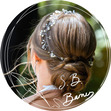S.B. Barnes's Blog, page 2
December 13, 2024
Second Chance: release date and ARC info
Super exciting news: Second Chance, the sequel to Heart First, is scheduled for release on February 4th! I'm really looking forward to it, I feel like with the help of the great team at Nine Star Press I got the most I possibly could out of this manuscript.

If you're interested in reviewing an ARC, I would be thrilled to provide one. Last time quite a few of the people who got ARCs didn't end up leaving reviews, so this time if you want one I ask that you send me an e-mail to sbbarnesauthor@gmail.com letting me know you want a copy and telling me where you'll be reviewing (goodreads, storygraph, amazon, personal blog etc.), just so I'm not screaming into the void here. I ask that all reviews be put up by February 4th!
And here a few hints of what is to come in Second Chance, if you're on the fence about reading/reviewing!


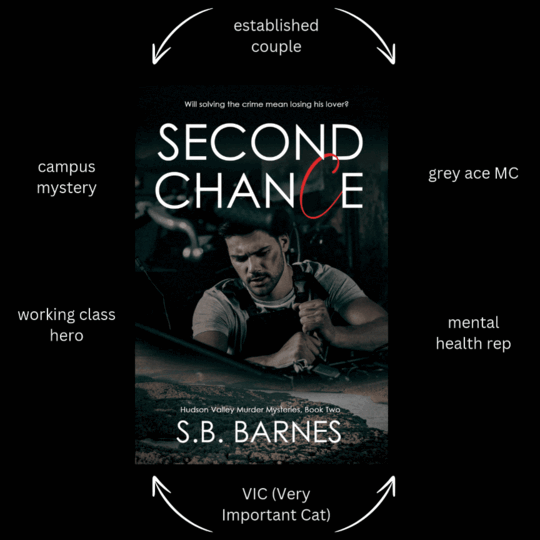
November 4, 2024
M/M Romance and Straight White Women
My tumblr followers voted for this as a blog post topic and I kinda wish they hadn't.
Let's start with a flowchart.

Tangentially related argument I could not fit into this image: People keep reading M/M romances written by straight white women and claiming they’re supporting the queer community but then turn around and call sapphic fiction “gross” (yes, that’s a thing that happened on Threads recently) and don’t buy M/M books actually written by queer men.
Here’s the thing. In my opinion, all of these arguments are true to some degree. I’m not out here to convince anyone they are wrong actually and it is totally A-OK for straight white women to write M/M romance without taking the time to consider and work through this debate. I’m also not out here to say straight white women ought to never ever write anything of the sort. For one, it would be pretty hypocritical as I am a white woman who is not comfortably disclosing her sexuality online but living in an outwardly heterosexual marriage and I write M/M romances.
I also don’t think I have a lot to add to some aspects of this debate. There are some aspects where the voices of queer men and people of color are more important than whatever I have to say. This reddit post is a great starting point for various opinions on the matter.
When thinking about this blog post, there are only two things I think are worthwhile for me to talk about because I can actually add something to the discussion. One is general and one is deeply personal.
The general point: Desire is political.
There’s an interview with Hozier floating around on the internet where he talks about how everything is political, even a child’s drawing of a house because it reveals what a child thinks a house should be even if they live in an apartment building or a tent or some other kind of abode. I believe strongly that the stance “everything is political” must also apply to desire.
Why is that important here? Well, it’s not value-neutral that most of these books feature white men. It’s not value-neutral that the body types most often presented are “built athlete”, “motorcycle daddy” or “skinny nerd”. It’s definitely not value-neutral that the types of representation (race, culture, body type, mental illness…) in the book are often part of the “trope sheet” used to advertise the book (see this blog post about that phenomenon). The popular books in the genre define what is desirable in it, and what is desirable is, well, a buff white hockey player, apparently. But only if he still has all his teeth. No, seriously, I’ve read about a hundred hockey romances in the last year and in only one was a main character attracted to his love interest’s tooth gap.
If we accept the stance that straight white women writing about queer men is appropriative and fetishistic, we accept that straight white women cornering the market on m/m romances is a political act and that their defining of what counts as desirable is forcing a hegemonic straight vision on queer desire.
This dovetails into the “m/m romance by women is het porn in a clown disguise” argument, which, again, I don’t necessarily think is wrong. It’s certainly not true of all M/M romance, I wouldn’t still be reading and writing so much of it if I thought it was always true, but I have read a non-zero amount of books that veered into “if I think traditional gender roles are ~sexy~ it’s okay to write them with no further reflection”.
In my opinion, which, in case I haven’t made that clear enough, is an OPINION and not the be-all end-all, a lot of this stuff can and often is grounded in writers reflecting on where they’re coming from and why they’re writing what they’re writing. Like I said, there are a lot of M/M romance writers I really like, for recs look at my other blog posts or my goodreads.
The issues begin when writers AND readers come into the genre with the stance “oh I just happen to only like books with white athlete protagonists” or “oh I only like omegaverse books where the omega needs to be taken care of all the time” or “oh I only like age gap books where the younger MC is a virgin” etc etc and do not take the time to reflect on that desire being inherently political. I’m not saying it’s wrong to like any of those things and I’m not judging anyone for reading any of the above—what I am saying is that enjoying those things specifically is a result of the culture we (the English-speaking readership driving amazon’s top 100 list) live in and what it teaches us should be desirable, specifically in a way that sidelines bodies of color, fat bodies, queer bodies that LOOK queer.
I genuinely think most writers and readers of M/M romance come into it with pretty healthy attitudes about these things; I see a lot of posts asking for less commonly seen dynamics and body types, I see a lot of critical discussion about these topics. I have also read several books in the genre that struck me as racist, sexist and homophobic. Writers of M/M romance, even straight white women, are not a monolith.
The personal point: why do I write M/M romance?
Like I said, I am very much part of the problem here. So why do I still write M/M romance?
Well, again, it has to do with desire. Specifically, It has to do with my relationship to desire and my own body and my own history. As you can probably tell from the everything about me, I’ve been involved in online communities and fanfiction since I was a pretty young teenager (I made my fanfiction.net account when I was eleven and I felt like such a rebel because the TOS said I had to wait until I was thirteen).
I then went on to have what was probably a pretty normal experience of being a teenage girl. I hated my body. I was fat (I am again, there was a brief phase where I wasn’t in between, which weirdly was the time when I wasn’t online so much and also had a lot more anxiety and several retrospectively horrifying sexual encounters). I thought my vagina was weird. A male friend made fun of me for having arm hair, so I thought it was normal to shave it off. I had a crush on a classmate and everyone found out and made fun of me for it. My parents had an awful divorce and I compensated by eating my feelings, a strategy I still haven’t figured out how to grow out of.
You know. Being a teenager, inhabiting a body. It was gross and terrible and I hated it.
And at the same time, I was discovering desire.
Having had completely unfiltered access to all of fanfiction.net and then livejournal, I knew a lot about sex and sexuality by the time I was fourteen or so and the hormones were really kicking in. I saw the original Supernatural kink meme. I read a lot of explicit fanfiction. I started toying with the idea of writing my own.
From the start I was pretty open-minded about what I read, but I didn’t like to admit it to myself. I enjoyed reading het stuff, and F/F, but I felt safest reading and writing M/M. I didn’t want to deal with unpacking my sexuality, which I had kind of always known was not going to end up being completely straight (still not interested in talking about it in more detail online). I especially didn’t want to deal with having to think about my body, the body I found so hateful and undesirable, as an object of desire. How could I? I couldn’t imagine anyone wanting me. Reading about women I found attractive having sex was kind of torturous because, well, that would never be me. Write what you know? Okay, I may not know what it’s like to be a queer man but I sure knew what it was like to hate myself, I could easily put myself in Dean Winchester’s shoes and feel a lot safer about it. (Yes, the sixteen-year-old angst was strong, yes, the fic is still out there, no, I will not link it. You can do the legwork and find it yourself).
I didn’t stay an angsty teen forever. I went on to experience being desired, to start feeling more at home in my body, to find someone I loved and get married. But I still find writing M/M an easier way to delve into my own thoughts, experiences and understanding of desire. Part of that is habit, a habit I could probably break if I tried hard enough. Part of that is the simple, boring explanation that I am attracted to men. Part of that is that it remains to me the safest way to explore queer identity.
Finally I will leave you with this. It is fully your prerogative to say I am part of the problem. I will even agree with you. Just from a writing perspective, though – one thing I have always loved about writing identities I am not is finding the one kernel of shared experience I have with a character who is a different person from me and spinning that kernel out into an understanding of what it means to be human.
*If you want me to talk about top/bottom discourse I will need a strong drink and a deep dive into my 2020 fandom tumblr account. Not today, Satan.
November 3, 2024
Hockey Romances. Why? (Redux)
About a year ago, I wrote a mini-essay on my tumblr with the title "Hockey Romances. Why?". I cross-posted it here a few months later when I got around to making this site. To this day, it remains my most popular post on either platform. At the time, I was about two months into medical leave during pregnancy and mainlining M/M romances since I was between writing projects myself, having finished the first draft of Second Chance.
I thought, oh well, I've thought about why I am so obsessed with this genre and written it out, and I even wrote a little 10k football story for a friend for Christmas to exorcise the sports romance bug (because I live in Germany, so I actually know things about football, as opposed to hockey). Surely this will be out of my system soon.

(Highly recommend Ari Baran if you want interesting themes, character growth and good hockey knowledge. Highly recommend Brigham Vaughn if you want fun, fluffy, trope-y goodness. Highly recommend Ashlyn Kane and Morgan James if you want a mix of fun, fluffy and good hockey knowledge. Highly recommend Avon Gale if you don't want to read about only rich and successful players. Highly recommend Scoreless Game by Anna Zabo and L.A. Witt if you want to cry a lot.)
Fast forward to a year later and it is not, in fact, out of my system. I wake up in the morning and check the game results from last night's hockey games (not to tell on myself but I find myself rooting for Toronto and Edmonton more and more even though I think Dallas could win this year, but also I am still an idiot about sports so who knows). Every time I catch wind of a new hockey romance, I order it, even though a lot of them have ended up being not quite what I wanted.
In a turn of events so predictable I should have seen it coming but somehow didn't, in late August I started toying with the idea of writing my own hockey romance when I couldn't find new reading material. By then I had watched tons of highlights and post-game interviews and felt as if I actually understood the game (watching actual full-length games while living in Germany and having a six month old baby is difficult for reasons like time zones and time in general being a vortex. Someday we will all be able to sit still for long enough. I have faith.)
Shortly after, I wrote a 75k draft in two weeks, typing away on my tablet in five minute increments while hanging out in my son's room listening to the toy elephant that plays the same three songs over and over again. Surely, I thought, this will finally eradicate the hockey demon within me.
By the time I had finished the first draft, I had the plots for three further books in the series outlined.
All this to say, "Two for Holding", the first book in the Minor Penalties series, is now under contract with NineStar Press and will be published at some point in the next year or so. I put Maple Leafs merch on my Christmas wishlist (would have gone for a Draisaitl jersey tbh but the Oilers colors are not for me). I have accepted that this is just who I am now. You can find more information about "Two for Holding" in the "Books" section of my website and further updates on Instagram and Tumblr, because I am constitutionally incapable of shutting up about this.
Hockey romances. I don't know why, but I have accepted my fate.
(Here is my aptly titled writing playlist for your pleasure)
July 16, 2024
Mini-update
In publishing news, book 2 is with its fantastic editor at Nine Star Press and I'll be finishing up with it in the fall. Release date tbd; when I know the release date I might run a giveaway with some print copies of Heart First. Until then, ebooks are half-off on smashwords until the end of July!
In writing news, I finally finished outlining book 3 and wrote the prologue. In an ideal world, there will be a total of four Hudson Valley Murder Mysteries:
Heart First
Second Chance
Third Degree
Fourth Wall
We shall see if that world comes to be. It turns out having a small human depending on you makes writing a lot harder.
Until then, if you're interested, here's the writing playlist for Second Chance:
(and a few other playlists)
May 19, 2024
What actually is a character trait?
On my other blog I'm having a fun time live-ranting about Bridgerton while I watch (summary: I really enjoy Bridgerton the show, I really do not enjoy Bridgerton the books, and there are a lot of moments when the source material makes the show do dumb things). But it's brought to mind something I have noticed both about romance novels and about children's/young adult literature. I call this phenomenon "what actually is a character trait?"
In Bridgerton, the one that's getting to me is that in the books, prior to becoming a main character for book for and/or season 3, Colin's main trait is that he likes to eat. In the world of the m/f 90s romance novel, this is only an acceptable trait in a man, or a thin woman, and it's quite jarring in Colin especially because in the books, Penelope has to lose weight before he finds her attractive.
Also, in my opinion, it's not really a character trait. Not an interesting one at any rate. It's very flat. If Colin liked to eat because he was sublimating some other feeling, like being looked over in his big family (a feeling he does canonically have), that would be something. But that's not the story that's there.
Another big one I recently read in an M/M romance novel is clumsiness. And...I don't know, that doesn't strike me as a real character trait either. How many people view being clumsy as a real, big part of their character? I've only known people to mention it when we're sharing meal and they spill something, or from elderly people who are struggling with a loss of motor control.
Again, this could become a compelling trait when given more depth. Like, this character is clumsy when people are watching because it makes them nervous to be observed, or around a family that treats them poorly, and overcoming the nerves or the family situation solves the clumsiness. This isn't super deep and I have seen it done before! It's not hard to make this kind of trait compelling!
In my opinion, these not-really-character-traits make sense in books for very young readers who are just learning what it means to have character traits, but at the latest by adolescence, books become a lot more interesting when characters are given more depth by grounding superficial traits in something that tells you more about the person.
From the vaults: Stephen King, Death of the Author and Twitter
This is an older blog post I'm importing from my ~author tumblr~.
So Stephen King went on twitter and compared criticism of cultural appropriation in literature to book banning. Oh boy.
I've known for a long time that if I am serious about getting my work published, establishing some sort of online presence on social media is an unavoidable evil. Not only am I ambivalent at best about the role social media plays in the world these days, I'm also deeply lazy about maintaining it. However, here I am, giving it by best effort.
Further than that, though, every time some new wave of discourse about a media creator breaks into my relatively small corner of the internet, my first thought is always "why did they have to share this opinion with the world?". Genuinely, sincerely, this post notwithstanding, even if my little cozy mystery about an academic and an auto mechanic finding love in the Hudson Valley does reach anyone someday, I would love if my opinions continue to interest no one at all.
Not that I don't think I have good opinions! They're mine, I'm partial, and I post them online more than is good for me or anyone else. And I'm not here to talk about cancel culture, smarter and more eloquent people have done that to little to no effect. I'm talking more about two things: Death of the Author and the twitter word limit and how they do not mix well.
Personally, I think this is a very bad take on King's part. Criticism is not the same thing as banning; people should be allowed to express when they think someone's ideas are bad or harmful. It's not the same as wanting to ban a book, not least because criticism lacks the authority to ban. Especially because book banning is often used to silence minority voices, and criticism of cultural appropriation in books is pointing out that the publishing industry these days elevates white voices and appropriation and thereby also silences minority voices. The comparison criticism and banning not only misses the differing intent behind the two things, it cuts out the structural elements of the industry being criticized and turns it into a "bad people want to ban books" discussion rather than "the system is discriminatory towards minority voices" discussion.
This kind of take has an origin, though. King is from a different generation than a lot of people reacting to his post, and his generation was deeply influenced by the first cultural backlashes to the horrors of Nazism. It created this very single-minded "all book banning is bad because the Nazis did it" type of discourse at the time, which perseveres in a lot of people. I see this a lot in my day job, where I interact with a lot of Germans in King's age group who were socialized to intensely reject anything perpetuated by the Nazis. Which is obviously a good impulse!
But it leads straight into the tolerance paradox where I then find myself explaining that it's not at all the same thing for young people of color to not accept being forced into reading literature in a school setting that uses racist language uncritically, or literature that uses racist language if that racist language isn't contextualized in class. This is a very different starting point for editing a curriculum - it's starting at a point of wanting to protect young, vulnerable people and to educate about and contextualize older texts that reproduce a colonial mindset. And because via repetition the "all book banning is bad" take has become oversimplified to the point of being an absolute, a lot of people aren't prepared to discuss it with nuance at all.
I have no idea where King stands on all these things, because he posted one tweet on the matter, which is a space that just utterly disallows for the nuance of the topic. And that one two-sentence tweet already has several thousand replies and far more people talking about it, to the point where any agent would probably recommend King say nothing more on the subject, because it will just create more discourse. Let's be real, King's career will not be affected, especially if he just ignores it for now.
But what I wonder is why he had to weigh in at all and why people had to engage and respond. Twitter killing death of the author is not news, but incidents like these are so starkly representative of how much easier it was to be a reader when you didn't have access to author's thoughts on everything.
March 6, 2024
The book review industry is broken
I'm not really here; I gave myself maternity leave from being an author online for a little while (last night I slept for one whole hour! The joys of parenthood!). But despite the no new content happening on my social media, the army of instagram-based book reviewers knows no rest and I continue to get message requests from people asking me to pay them to promote my book.

This one is especially good. I love how they just throw it in there in the third paragraph. "Interestingly, this is my job and not a casual request".
Not to sound super bitter (again, one hour of sleep), but part of me always wants to answer as if I don't understand the subtext that this is a service I would pay for, like "great I'm so glad you're interested! Go ahead and promote my book!" It makes me appreciate the few people who actually put their prices in the message. At the same time, though, it's just kind of a sad reflection on where we are in the publishing industry. Most publishers don't/can't afford to promote most books, with the big ones being the exception, and even then it's mostly established authors or authors who already have a big following online. So this whole market of promotion has sprung up, because authors are not actually advertisers (see my social media for further evidence). But for some reason, people don't just say that's what's going on, they couch it in flattery/interest that comes off as fake, and it leaves me with the weird feeling that a) I'm being hoodwinked, and b) I am part of the product being sold.
February 2, 2024
Top Reads from January

Something I learned about myself this month is that my preferences trend towards books that have a solid supporting cast and are surrounded by a world that interests me. This is something that absolutely drives my interests—I read a lot of books where I really enjoyed the characterization or the chemistry between the leads, but find myself wishing for more worldbuilding or more detail on a throwaway line about a character's background.
With that in mind, here are my top reads from this month, with links to more in-depth reviews on Goodreads!
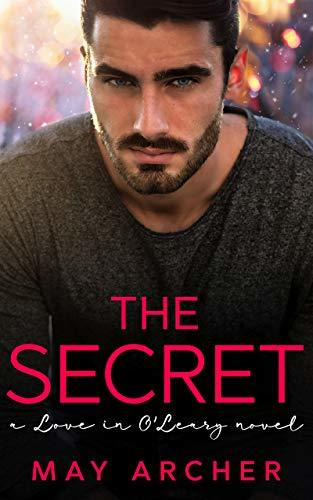
The Secret is the third installment in Archer's "Love in O'Leary" series, and it really filled several niches for me: my perpetual longing for secret relationship/relationship reveal stories and my love of more in-depth worldbuilding. The interlinked community with multiple couples who each get a book is a staple in the romance genre, and in this series I really liked how the timelines overlap so you get a sense of what the supporting cast of each story is thinking about what happens in the other stories. It really matches the small-town setting and the cozy vibes of the series. Still, this one was my favorite for the relationship dynamic and the way family dynamics tied into that.
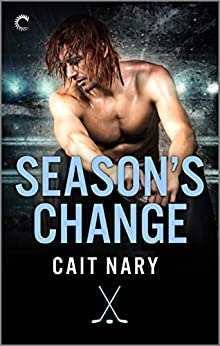
Season's Change follows two hockey players on the same team who begin as reluctant roommates, then friends, and then become more in a bi awakening story. This is another one that really felt anchored in the world it was set in. Both main characters go through struggles with their families and their pasts, and while they provide each other comfort, they also have things they need to overcome individually. The rest of the team they were on also felt like real characters who were part of the story. There was a lot of angst and pining, and I could have done with a slightly longer end to bask in the resolution, but it was overall a great read and the relationship between Olly and Benji was wonderful to read about, both as a friendship and then later as more.
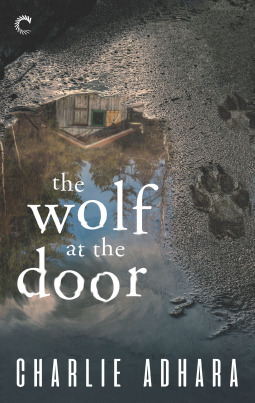
Big Bad Wolf Series by Charlie Adhara
The link leads to the first book in the series, but I loved the whole thing. This is a five-part series with a second series following a different character that has just begun, and the first five books all follow the same characters: Cooper and Park. Cooper is an FBI agent working on werewolf-related cases, Park is a werewolf with insight into the community. They meet solving a missing person's case and become partners. What I really love about this series is...well, a lot of things. The later parts really explore Cooper and Park in an established relationship and how they work at it to stay a solid couple and cross different milestones as a couple, which I adore. Romance often only covers the get-together, not the being together, and this has some great sections especially about Cooper learning what it means to be open with someone. The mysteries are all really interesting and well-done, and the werewolf aspects are uncovered slowly since we read through Cooper's eyes as an outsider who is slowly learning more. Sometimes I did wish Park would tell him more, but on the whole, I highly recommend this entire series.
Scoreless Game by Anna Zabo and L.A. Witt

I feel like I have already talked about this one WAY too much, but I did read it in January and it has stuck with me so much. Strong worldbuilding, great characters, heavy angst leading to a wonderful resolution. Something I really like is that the book isn't just over the second the two leads reconcile but rather it follows their relationship rebuild and also them both tackling the outside issues that led to them falling apart. Interesting and well-done ace representation...I could go on. This one is just really good.
Honorable mentions to:
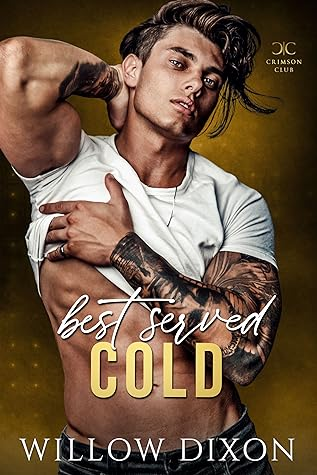
Best Served Cold by Willow Dixon
If you're reading for an ace awakening and a strong couple, I highly recommend - this was one where the only thing missing for me was more about the world around them and the couple's family background, which as I said above is a personal preference.
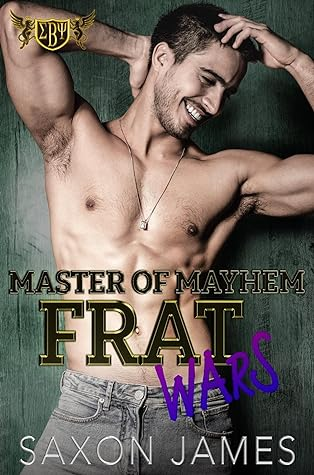
Master of Mayhem by Saxon James
This entire series is very low angst, high hijinks. It's cute and sexy and a lot of fun to read. This was my favorite (to be fair I think the third one has the strongest story, but the relationship dynamic of himbo 4 himbo really captured me.
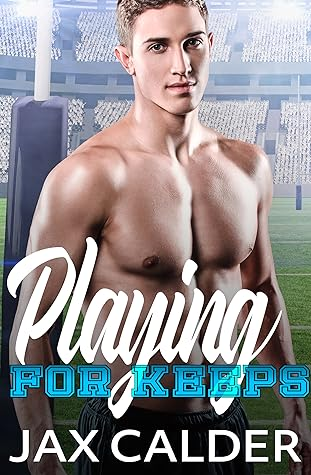
Playing for Keeps by Jax Calder
Jax Calder's Sporting Series is about rugby players falling in love. It's set in New Zealand, which is great—I love getting settings that aren't American. All three books in the series are highly enjoyable and feature some of the following: good minor characters, sweet portrayals of single parents, great chemistry between leads. This was my favorite because I love a good pining story.
January 28, 2024
#FriendsToLovers: Tropes and Identity as Marketing Tools

These are two promo images I made for Heart First. Both of them are accurate in that they note things that are in the book and both of them are advertisement in that they are supposed to be things that might draw readers in to find out more, or to hopefully read the book.
Making them was very awkward for me.
Not to be all “oh woe is me, I got to publish a book and now I have to promote it”, I know I got very lucky and I’m thrilled by the chance to publish anything. I’m not a natural fit for the kind of self-promotion authors are expected to do these days for a lot of reasons (posting these kinds of images makes me feel like a self-aggrandizing jerk, I get burned out on most social media after a couple days of regular use, etc. etc.) but I accept it as part of the deal. I’m also currently lucky enough to have time to do this, a situation which will change in the imminent future.

But it’s also this kind of image specifically. I see them for a lot of books and I would term it the hashtagification of genre fiction. Or, if you’re cool like me, the ao3-tagification. The point is to outline tropes that come up in the work in a shorthand familiar to audiences of the genre. Things like “spicy” or “steamy” indicate that there’s on-page sexual content. Phrases like “detecting couple” or “murder” clue in the reader that it’s a mystery and a romance. “Found family” indicates that the non-romantic relationships of the characters are also important to the book. It’s a way of enticing a reader without even the effort of having to read the blurb; it’s also indicative of how books are sold.
Most sites where you can buy books operate on a keyword system. Amazon does; Smashwords does; cataloguing sites like Goodreads, Storygraph and romance.io rely on readers to provide keywords. And those keywords are most often tropes and content found within the book. You get this on social media sites as well, when readers ask for book recommendations. A lot of the time, the request will be for a trope, like “friends to lovers” or “second chance romance”. Sometimes the requester will mention specific books within that trope they particularly liked as a starting point, too, but often it’s all keyword-based.
This isn’t a criticism of that trend; it’s an easy way to catalogue in an incredibly expansive literary market. The more digital reading gets, the more the work of cataloguing becomes a communal project taken on by authors and readers. Authors want readers to find their work based on content; readers want to organize their libraries for themselves and others to make similar works findable. Speaking for myself, it’s more intuitive than the Dewey Decimal System at least.
At the same time, there are drawbacks to it. Chief among them being, it can reduce a work down to tropes. And a trope is not the sum of a book! A book can have the keywords “friends to lovers” but that doesn’t tell us how close the friendship is, how long the characters have been friends, how laden with backstory their friendship might be. It also doesn’t tell us what kind of book this is. Is it a light and fluffy romance novel? Is it a serious, angsty romance novel? Both of these things exist, and both could be marketed using “friends to lovers” and “mutual pining”. A graphic like the ones above can’t really get away with using a phrase like “in-depth characterization” or “this is a serious book”, not least because it implies something negative about other books.
Furthermore, these are not the images I had to make. I could have made this image.

For the record, this is also an accurate image. Daniel is Jewish, albeit non-practicing. He’s also very anxious, although he doesn’t have a clinical diagnosis. As for “demi awakening”, well, that’s Tony’s story and he’ll get to tell it in the second book (which is why it isn’t something I’ve mentioned at all about Heart First, because Heart First is Daniel’s book and he doesn’t know that about Tony).
I’ve seen a lot of these, and I have really split opinions about them. On the one hand, #ownvoices is a really important movement because the publishing industry is incredibly stacked against writers of color and writers in the lgbtq+ community. One would think it would be better in a field like M/M romance, but it isn’t always, especially with big publishers, and that’s to say nothing of the drastic comparison between the numbers M/M romance does versus F/F romance. Using advertising like this to draw attention to authors writing intersectionally and authentically is incredibly important both for readers within those communities to find authors they want to read, and for readers outside those communities to become sensitized to the issues at stake.
Of course, it’s not just writers who belong to these groups who write about these characters, and a lot of writers use this type of template regardless of whether or not they belong to the group. And on the one hand, they absolutely should. No writer owes their readers full disclosure about their identity (there’s a reason my profile pic is the back of my head), and pressure on authors to be a certain identity in order to write about it is nothing but harmful.
On the other hand, a similar problem presents itself as with tropes in general. Had I used this image instead of the ones I did use, would “Jewish MC” have been misleading? As said, Daniel is Jewish and he struggles with his identity, but he doesn’t practice and it’s not in the foreground of the book. I’m also not Jewish and didn’t really feel like it was my place to use identity as advertisement. Instead, I used much vaguer and less catchy descriptors that I thought were more accurate, at the potential cost of losing readers who were looking specifically for that identifier. And this is coming at the issue with a non-cynical approach; a more hardened look might tell you that often, racial, cultural or sexual identity is used as advertisement for books where that factor plays little to no part.
So in summary, this kind of image: perfect social media fodder because it’s eye-catching and tells you a lot about the book in a short time? Or are we authors reducing a book to tropes when that threatens to flatten the book’s best qualities? And is it really okay to use identity as advertisement or does it always depend on who is doing it?
January 25, 2024
Heart First is nominated for the Queer Indie Awards!

In super thrilling news, Heart First is nominated for a few Queer Indie Awards: Best Overall Mystery/Thriller, Best Lead Character for Daniel, Best Romantic Relationship for Daniel and Tony and Best Debut. You can vote here until February 2nd (voting has been prolonged). The easiest way to find it is to search for "Barnes" in the poll, since the poll is pretty long to scroll through.
That said, I highly recommend taking a look at everything else being voted for - I know it's added to my to be read list for 2024! There are so many interesting books, novellas, graphic novels and so many beautiful covers to check out!
Huge thanks to anyone and everyone who nominated Heart First, voted for it, and everyone who took the time to leave a review on Goodreads or elsewhere!

It's hard to put into words how it makes you feel, as a writer, to read a review of your work that really gets what you were going for. It's motivated me to dive into the editing of book 2 (the contract for which I officially signed this week! Daniel and Tony will be back!) I'm so thankful to everyone who took the time to leave a review on Goodreads!
I'd like to also explicitly include everyone in that who had criticisms or didn't enjoy Heart First in those thanks. Not only is it instructive for me to learn how it comes across to different people, the book reviewing/publishing industry can be kind of weird about people having the audacity to not like everything they read. No book will be universally acclaimed and that's fine, and Goodreads/Storygraph are resources for readers to share their thoughts, not for authors to market themselves.
I know it doesn't always work like that in practice, but we live in a weird time in which readers and authors have direct access to each other via social media, and I've seen a lot of weird situations including authors going after reviewers for bad reviews or reviewers specifically @-ing authors whose books they didn't like. For me personally, reviews are a space for readers to reflect on their experience of reading the book, they aren't a space for me to question or comment. (This is also why I'm so allergic to the ~15-20 message requests in my Instagram inbox asking me to pay someone in exchange for reviewing the book on different sites).
If someone has questions or wants to reach me directly to talk about the book or anything else, that's something you can absolutely do via my socials; I view that as separate from the act of reviewing. Unless it's outright defamatory, it's definitely not my place to interact with reviews. Imagine me reading them from my cave underground hoarding them like a very weird dragon who never goes outside but appreciates every review that floats in through the cave entrance.
You can check out the goodreads page here, order on amazon or smashwords, and vote for Heart First in the Queer Indie awards until Feb 2nd!

